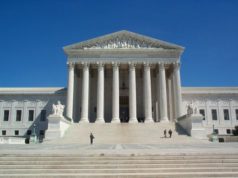Table of Contents

The issue of abortion has been a contentious topic in American society and politics for decades. The Supreme Court has played a significant role in shaping the laws surrounding abortion, and its decisions have been the subject of much debate and controversy. This article will explore the Supreme Court’s decisions on abortion, including their impact on the issue, and how they relate to the broader issue of reproductive rights.
Before discussing specific decisions, it is important to understand the broader legal framework that surrounds the issue of abortion. The right to an abortion was first established in the landmark 1973 case of Roe v. Wade. In that case, the Supreme Court held that a woman’s right to choose to have an abortion was protected by the Constitution’s right to privacy. The Court stated that this right extended throughout the pregnancy, but could be limited by the state in the second and third trimesters in order to protect the health of the mother and the potential life of the fetus.
Since the Roe decision, the Supreme Court has heard numerous cases that have challenged various state laws and regulations pertaining to abortion. Some of these cases have upheld the right to an abortion, while others have placed restrictions on that right. Below are some of the key Supreme Court cases that relate to abortion.
Planned Parenthood v. Casey (1992)
Planned Parenthood v. Casey was a significant case that challenged a number of reproductive rights laws in Pennsylvania. The case was brought by Planned Parenthood and a number of other women’s health groups, who argued that the laws in question violated the rights established in Roe v. Wade. The Supreme Court ultimately upheld the central holding of Roe, but also changed the standard for evaluating abortion laws.
In its decision, the Court stated that abortion laws can place an “undue burden” on women if they create a substantial obstacle to a woman seeking an abortion. The Court also overturned a provision of the Pennsylvania law that required women seeking an abortion to notify their spouses, stating that this requirement placed an unconstitutional burden on women.
Whole Woman’s Health v. Hellerstedt (2016)
Whole Woman’s Health v. Hellerstedt was a case that challenged a Texas law that imposed strict regulations on abortion clinics. The law required doctors who perform abortions to have admitting privileges at nearby hospitals, and also required abortion clinics to meet the same building standards as surgical centers.
The plaintiffs argued that these regulations placed an undue burden on women seeking abortions, and that they were designed to make it harder for abortion providers to operate. The Supreme Court ultimately agreed, stating that the regulations did not provide any significant benefits to women’s health, but instead created significant obstacles to obtaining an abortion. The Court held that the regulations were therefore unconstitutional and struck them down.
June Medical Services v. Russo (2020)
June Medical Services v. Russo was another case that challenged a Louisiana law that required doctors who perform abortions to have admitting privileges at nearby hospitals. The law was similar to the Texas law that was challenged in Whole Woman’s Health v. Hellerstedt.
The Supreme Court ultimately struck down the Louisiana law, stating that it placed an undue burden on women seeking an abortion and that it was virtually identical to the Texas law that had already been struck down. The decision was seen as a significant victory for reproductive rights advocates and reaffirmed the Court’s previous holdings that abortion laws must not create an undue burden on women seeking an abortion.
Dobbs v. Jackson Women’s Health Organization (Upcoming)
Dobbs v. Jackson Women’s Health Organization is a case that the Supreme Court will hear in the fall of 2021. The case challenges a Mississippi law that prohibits abortions after 15 weeks of pregnancy, with only limited exceptions for the health of the mother and fetal abnormalities.
The plaintiffs argue that the law is unconstitutional because it violates the standard established in Roe v. Wade, which allowed states to regulate abortion only after viability, which typically occurs at around 24 weeks of pregnancy. A decision in this case could have significant implications for the future of abortion rights in the United States.
The Supreme Court’s decisions on abortion have played a significant role in shaping the legal framework surrounding this issue. While the central right to choose to have an abortion remains protected under Roe v. Wade, the Court’s decisions have also established that states can regulate abortion in certain circumstances. These decisions have also emphasized the importance of ensuring that any regulations on abortion do not create an undue burden on women seeking an abortion.
As the upcoming Dobbs case demonstrates, the future of abortion rights remains uncertain. The Court’s decision in this case could have significant implications for the ability of women to access safe and legal abortions in the United States. It is therefore important for individuals and organizations to remain engaged with this issue and to advocate for policies that protect and expand reproductive rights.
Although terms like holocaust and crucifixion have no specific subjection in their respective definitions, the weight, history, and meaning attributed to them has resulted in an unofficial, unconscious association on the part of the majority of the general populace. The term abortion seamlessly follows suit with this dynamic.
Abortion is synonymous with termination, which retains no implicit subject matter. However, due to the perceived legal, ethical, moral, humanistic, and complex implications that comprise the issue of the practice of abortion, which is legally considered to be the premature, volitional termination of a pregnancy, the term itself invariably accompanies a conjunction to a piece of legislation passed by the U.S. Supreme Court in 1973 with the verdict reached in Roe vs. Wade, which is arguably one of the most debated and discussed rulings in the history of the U.S. Supreme Court.
A Texas woman, under the renowned alias Jane Roe, brought her case before the U.S. Supreme Court with the hopes of being granted the right to terminate her unwanted pregnancy, claiming that her legally mandated inability to do so violated the rights granted to her in the Fourteenth Amendment.
The Fourteenth Amendment ensures civil rights and liberties to all citizens of the United States in the form of “Life, Liberty, and the Pursuit of Happiness.” She maintained that because the issue regarded her body, the rights to any choices regarding it should be at her discretion, explaining that if the pregnancy stifled her well-being, she had the right to have an abortion.
Fierce criticism ensued as a result of the case and challengers of the potential prospect of allowing Jane Roe to have an abortion participated in demonstrations, issued threats, and with the usage of biblical passages, likened abortion next to murder. The U.S. Supreme Court ruled in favor of Jane Roe, allowing her the right to have an abortion. The ruling U.S. Supreme Court Justice explained that the fetus was the property of Jane Roe and the Government neither had the legal right nor cause to determine the fate of her unborn child.
Due to the ambiguity of when life is assumed to begin – whether it be in the second trimester or upon conception – likening abortion to murder is an extremely controversial debate, riddled with ethical and emotional implications. However, the U.S. Supreme Court established that the Government is permitted to intervene in a decision to have an abortion during and after the second trimester – 4 to 6 months following conception – if it is found that it will present a danger to the mother. In addition, the U.S. Supreme Court ruled third trimester abortion, also called partial birth abortion when the termination of a pregnancy occurs between 6 to 9 months after conception, to be illegal, as it shows “unjust disregard to the fetus.”
The debate regarding abortion is one of the most notorious, complex, and sensitive in the history of the U.S. Supreme Court. Although the decision made in the hearing of Roe vs. Wade is under constant scrutiny, first trimester abortion currently remains legal.


























